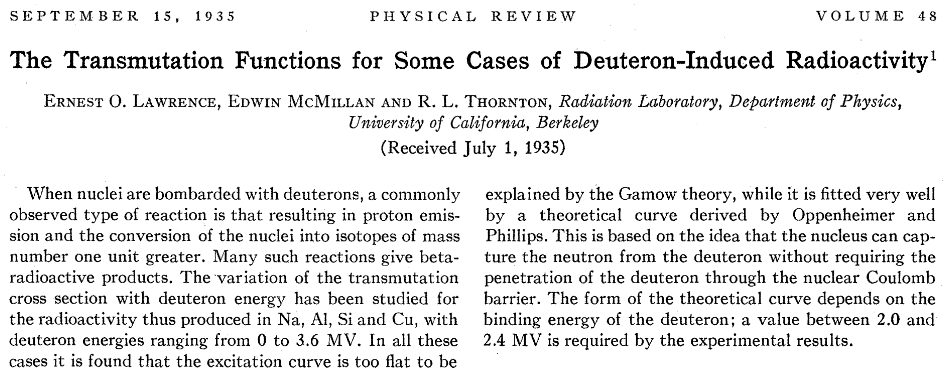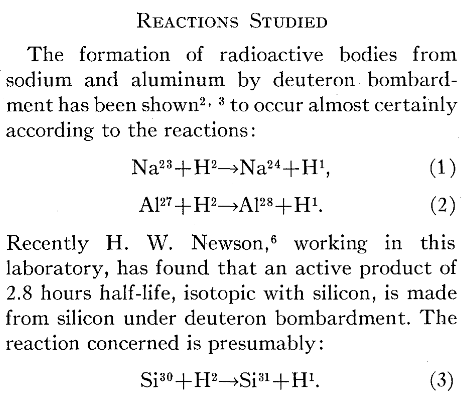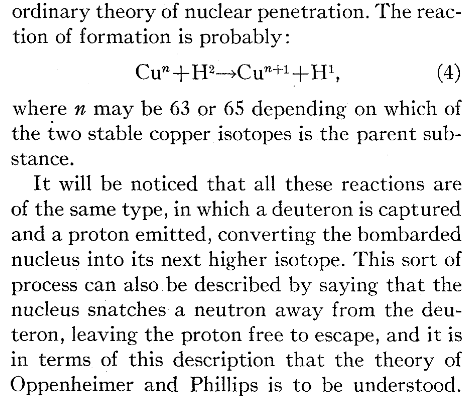E. O. Lawrence
In science, we often read of bad luck stories. Galois for instance. Twice rejected by university, the second time permanently. Held back a year in high school. An exam paper he submitted was permanently lost when the examiner died. Hated by students and teachers. Dead at the age of 21, an early victim of the French Revolution.
We seldom read of good luck stories like Ernest O. Lawrence. What a contrast! Support from both the electrical engineering and chemistry departments, no problem. Deuterium gas, no problem. 8 million volts of alternating current, no problem. Macroscopic samples of 34 elements, no problem. Lead water tanks, no problem. 60-ton magnet, therein lies a story.
The Federal Telegraph Company had been forced in 1918 to to abandon its plans for constructing a wireless station in China. As a result, Federal still had a 60 ton magnet on its hands. Lawrence’s department head just happened to be the vice president of Federal, and he convinced the company to give the magnet to Lawrence, for free. No problem.
Results, spectacular. The high energy deuterons smashed up all the elements they were fired at. Iron atoms were changed into cobalt, manganese, and a radioactive isotope of iron. All 34 elements subjected to bombardment underwent a transformation, many turning into radioactive substances. Artificial materials obtained included radioactive sodium, phosphorus, iron, iodine, and “Radium E” which is now called bismuth-210.
I must read the original papers by Lawrence some time.
Lawrence was the first scientist to manage what is now called “big science”. With the 60 ton magnet he constructed an 85 ton cyclotron. Next step up, a 225 ton cyclotron. Nobel Prize in 1939. Lawrence successfully argued for an even bigger cyclotron. Even a 225 ton cyclotron can only split off a few of the particles of the nucleus, a bigger machine is necessary to completely probe the strong force holding the atomic nucleus together, and discover new forms of radiation.
He managed to raise the estimated million and a half dollars needed for its construction. His 4,900 ton synchro-cyclotron with 4,000 ton magnet, surrounded by lead water jackets 15 feet thick, was completed in 1946.



